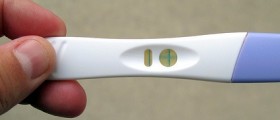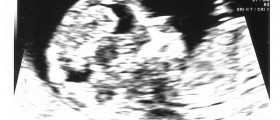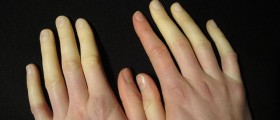
Menstrual cramps
Menstrual cramps are characteristic pains thatoccur in the abdomen and pelvic during the menstruation. A woman must know that menstrual cramps and those distressful symptoms that occur during premenstrual syndrome are not the same. In majority of cases, women suffer from both disorders, premenstrual syndrome and menstrual cramps. Menstrual cramps are a condition that affects more than a half of female population and they are more frequent in adolescent girls than in older women.
Mild and severe menstrual cramps
Menstrual cramps are mild in some cases, or extremely severe in some others. The mild menstrual cramps are not very serious and too painful. They usually do not last long and pass quickly. Many times they are hardly noticeable, or women with mild menstrual cramps only have a sense of light heaviness in the stomach. On the other side, severe menstrual cramps are very painful and many women cannot perform their daily tasks because of them.
Dysmenorrhea and types of dysmenorrhea
Dysmenorrhea is the medical term for painful period or menstrual cramps, and there are two types: primary dysmenorrhea and secondary dysmenorrhea. Primary dysmenorrhea is characteristic for not having the exact gynecologic cause for the pain. Menarche is the name for the beginning of the menstrual cycle, and primary dysmenorrhea usually starts six months after the first menstruation. The menstrual cramps of this type usually do not start until ovulatory menstrual cycles appear. Secondary dysmenorrhea occurs as a result of some problems that occurs in a woman's reproductive system. This type of menstrual cramps may appear with first menstruation, but, usually it happens later.
Causes for menstrual cramps
Endometrium is the medical term for the inner lining of the uterus and each month it prepares itself for the probable pregnancy. If the pregnancy does not occur, the unneeded lining of the uterus becomes swollen and is ejected as menstrual flow. At this time, certain molecular substances that are called prostaglandins are produced and they cause the muscles of uterus to contract. Subsequently, the blood supply to the endometrium is restricted and endometrium dies, after which it is ejected through cervix and vagina out. Leukotrienes are other substances that are produced in this tie and they also cause menstrual cramps. When the blood clots are large and the woman’s cervix narrowed, the menstrual cramps may be very painful. Those women who have high levels of prostaglandis in the endometrium usually have very painful menstrual cramps.
















Your thoughts on this
Loading...